Candy caps are mushrooms that taste like maple syrup. They're incredibly potent, and the only mushroom that's better in desserts than in savory recipes. Read on and I'll show you everything you need to know about cooking with them.
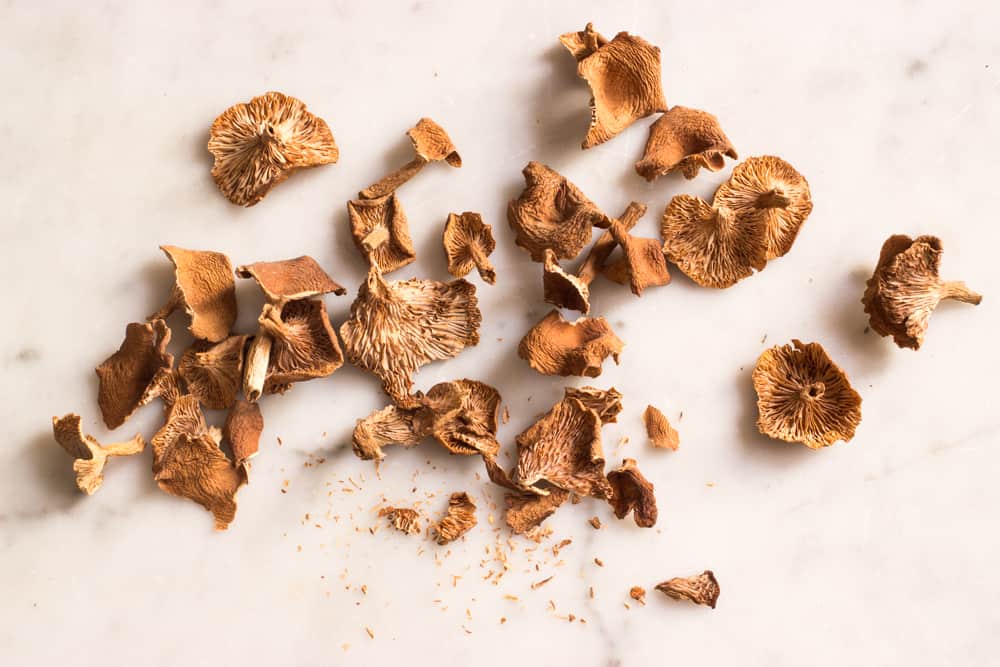
The first time I made a mushroom dessert, it was a porcini ice cream made from fresh-frozen porcini, which the pastry chef where I worked at the time pronounced an abomination and refused to use. In hindsight, there were probably better things for me to do with those expensive mushrooms. Candy caps though? They're another story.
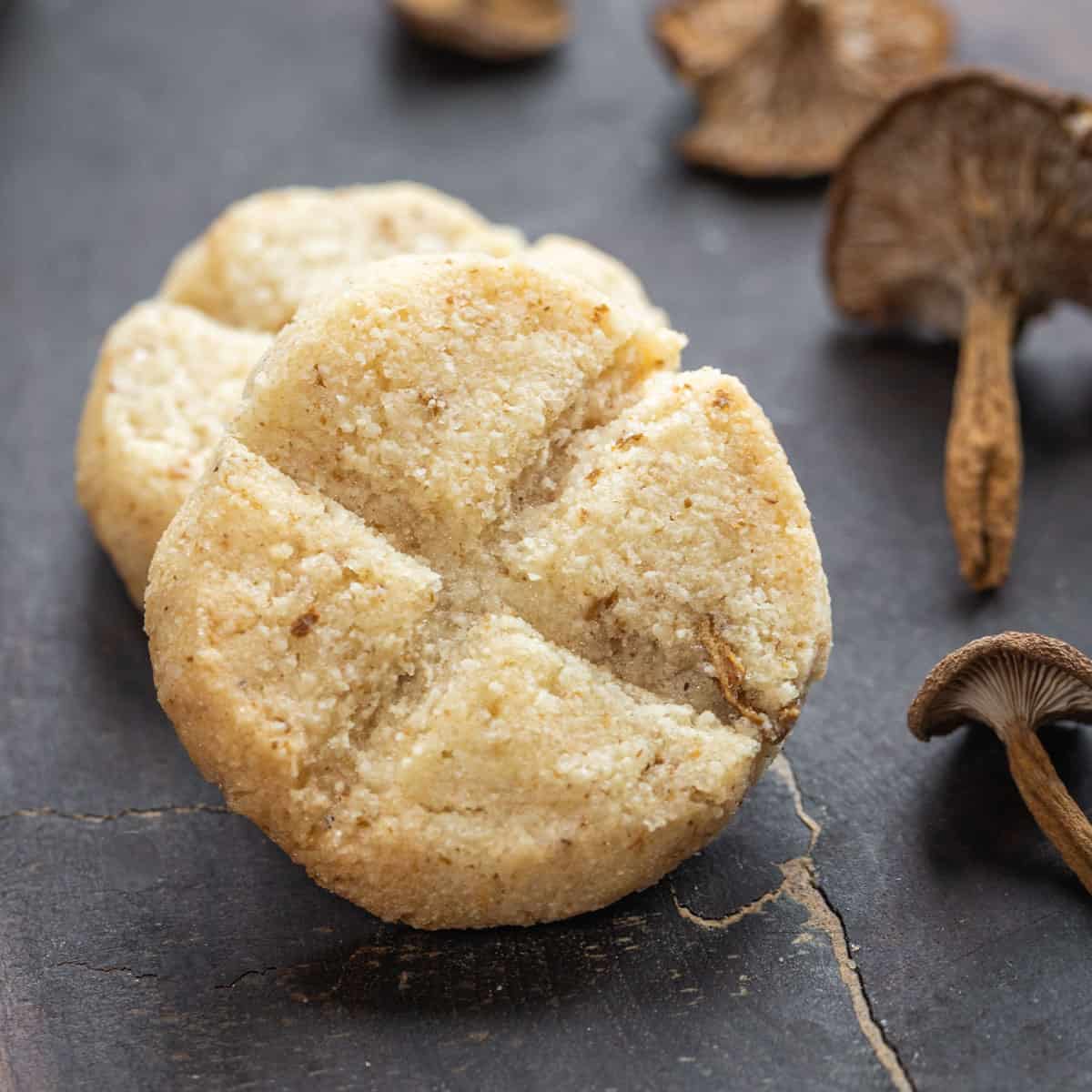
I can still remember how excited I got reading about them years ago in Eugenia Bone's book Mycophilia. I mean seriously. Nature created a mushroom that reeks of maple so strongly you can smell it through clothes, plastic, paper, even your skin after you eat it? "No way!".
It's true though, and even touching high-quality dried ones will make your hands smell sickly sweet for hours. Back when I had an apartment, the entire floor would reek of maple syrup after I cooked anything with them for days on end. The smell is so strong of maple syrup that it almost tastes unnatural.
There's a hint of mushroom flavor if you search for it, but most people will never taste or recognize it at all--just pure, maple-y, candy cap goodness.
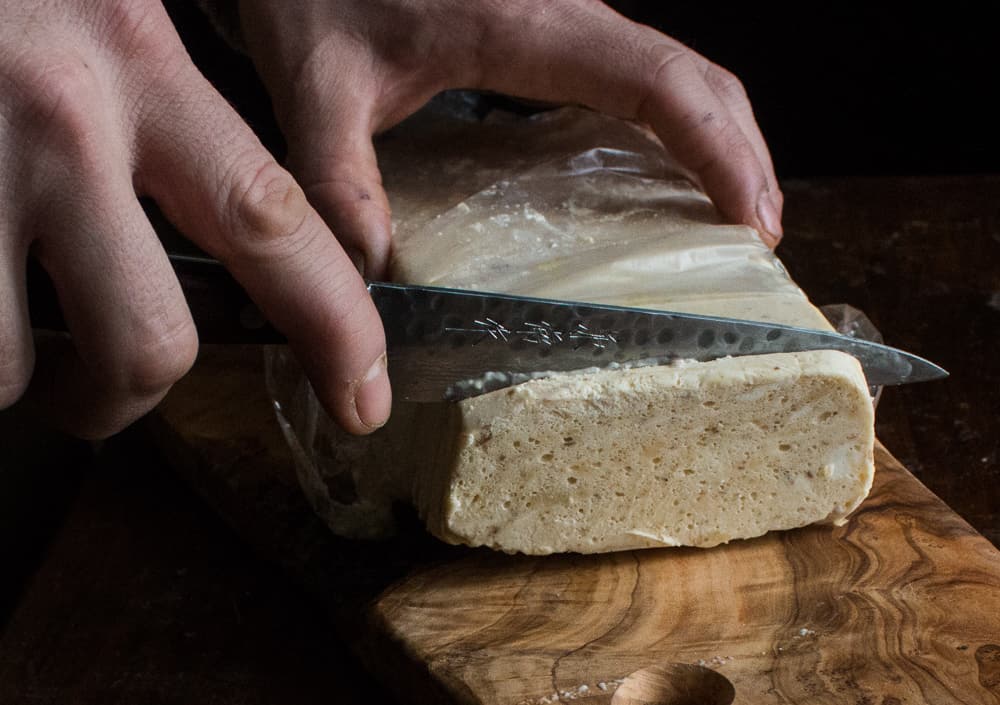
There's more than one candy cap
There's a number of different candy cap species, but generally people speak of three: Lactarius fragilis, rubidus, and rufulus, but from my experience (they don't grow in the Midwest) mostly Lactarius fragilis is what's available, and most of the time I've purchased them they've been excellent. Since they're tiny little buggers, the price should reflect their quality. 18-20$/ounce retail is common, and upwards of 150-200$ wholesale is fair.
As I mentioned, the most commonly referred to candy caps don't grow in the Midwest, but we do have a species of Lactarius in our area that's similar: Lactarius camphoratus. Notice that I don't use the word candy cap to describe them. For the record, If you're going out hunting for what people call the Midwestern "candy caps" in my opinion, do not expect any sort of culinary result like commercially sold candy caps.
The flavor of the camphoratus isn't as strong, not in the slightest. There's a subtle hint of the flavorful compounds present in other mushrooms in the genus, but any similarities end there. Anyone who tells you Lactarius camphoratus is a substitute for the real thing is misinformed, or hasn't had the real-deal candy caps.
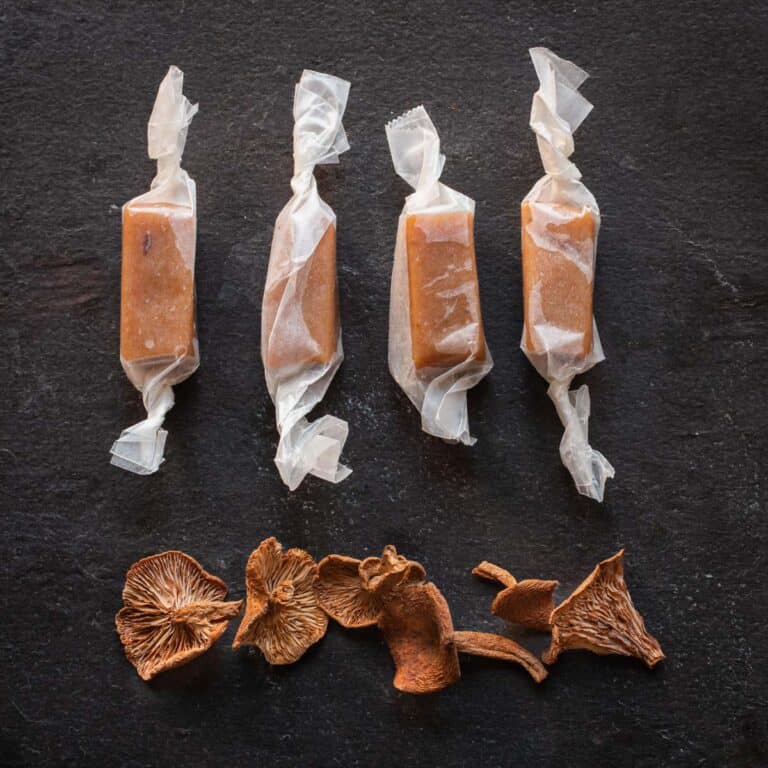
Cooking
As for cooking the real candy caps though, they're fantastic in just about any dessert where you can imagine them. They're really a dream come true for the adventurous dessert maker. Candy caps are easy to use, and incredibly strong. You can add them to just about anything and get a good result. Instead of "what can you make with candy caps?" a better question to think of is "what can't you make with candy caps". Here's a few examples, just for starters:
- Ice cream
- Cookies
- Any kind of syrup
- Anything with dairy
- Caramel
- Custards
- Even marshmallows!
I'd challenge you to name another dessert ingredient outside of vanilla and chocolate that's more versatile.
Grind them into powder and go!
Since they're dried mushrooms, you could technically re-hydrate them in water, swish them around to remove any grit strain the liquid and separate or recombine the two depending on what you're doing with them. But, I find that not to be necessary. Typically I grind these into powder and just add that to whatever I'm making, and I've never had a problem with grit using commercial candy caps ground to a powder.
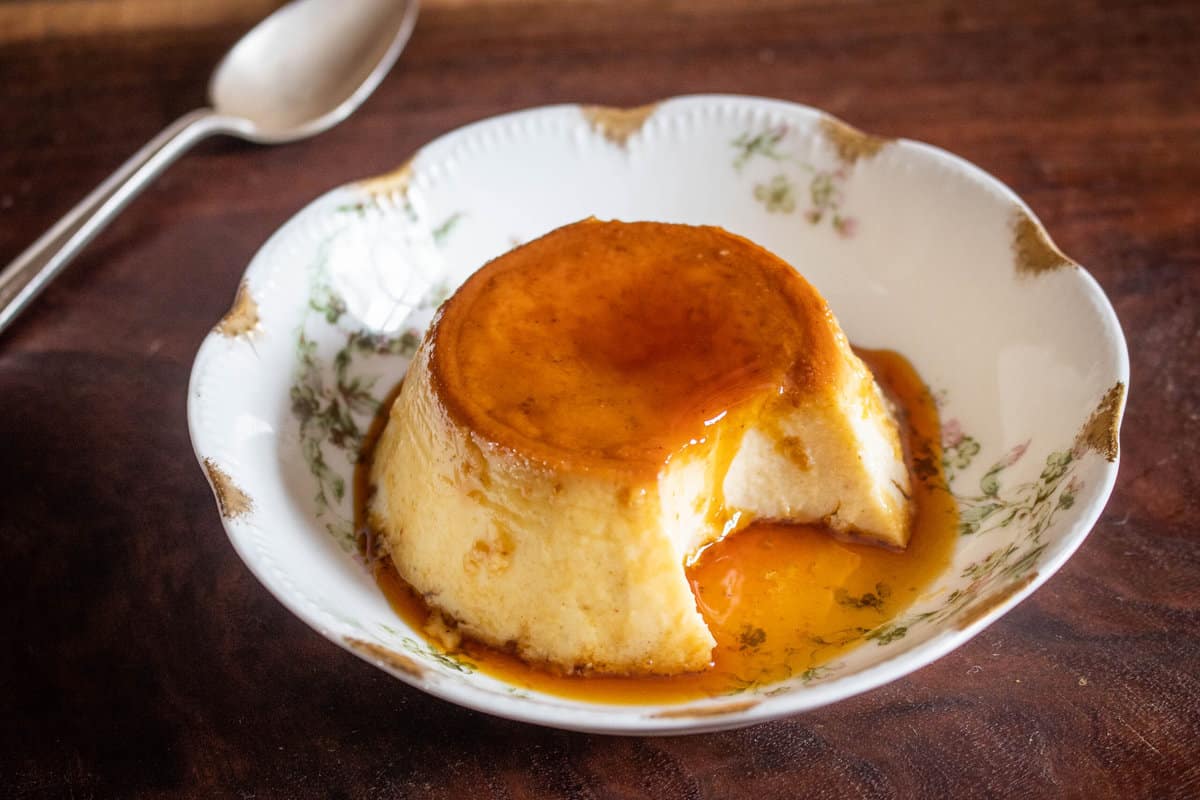
Grinding your candy cap powder also ensures an even distribution of their flavor. From there, as you can probably imagine, there's plenty of possibilities for using these, but since they're flavor is reminiscent of maple, imagining places where maple would taste good is a great place to start.

Use small amounts to Avoid Bitterness
The only thing to be careful with, and probably unlikely since, unless you're harvesting these in large amounts yourself, is that you don't want to add too much of them to something, since things will get bitter, fast. If you start out with small amounts and taste as you go, you won't have a problem. To make things even easier, I have a number of things I've made that you can start out with that are tested and ready to go.
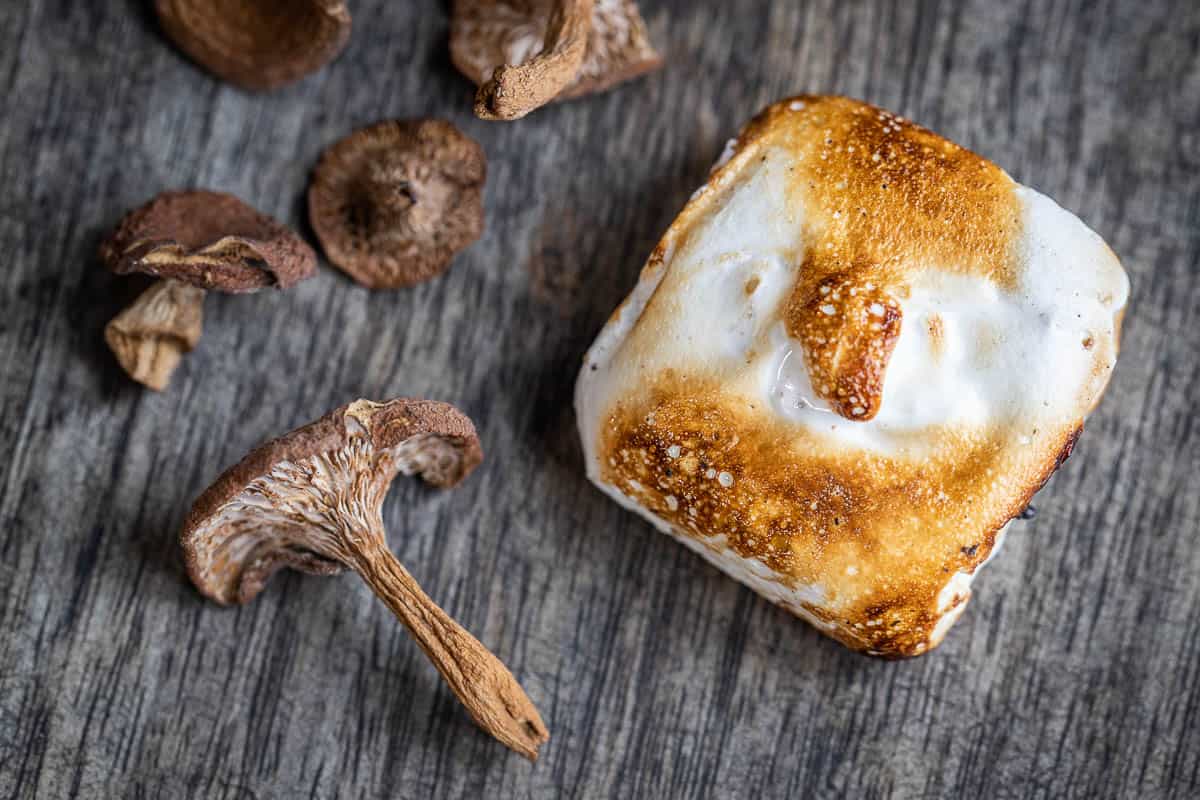
Where to buy
There's a few different suppliers online. Here's one example.
Recipes
- Candy Cap Caramels
- Candy Cap Semifreddo
- Candy Cap Bavarian Cream
- Candy Cap Ice Cream
- Candy Cap Caramel Sauce
Related
35 Essential Wild Mushrooms Every Forager Should Know
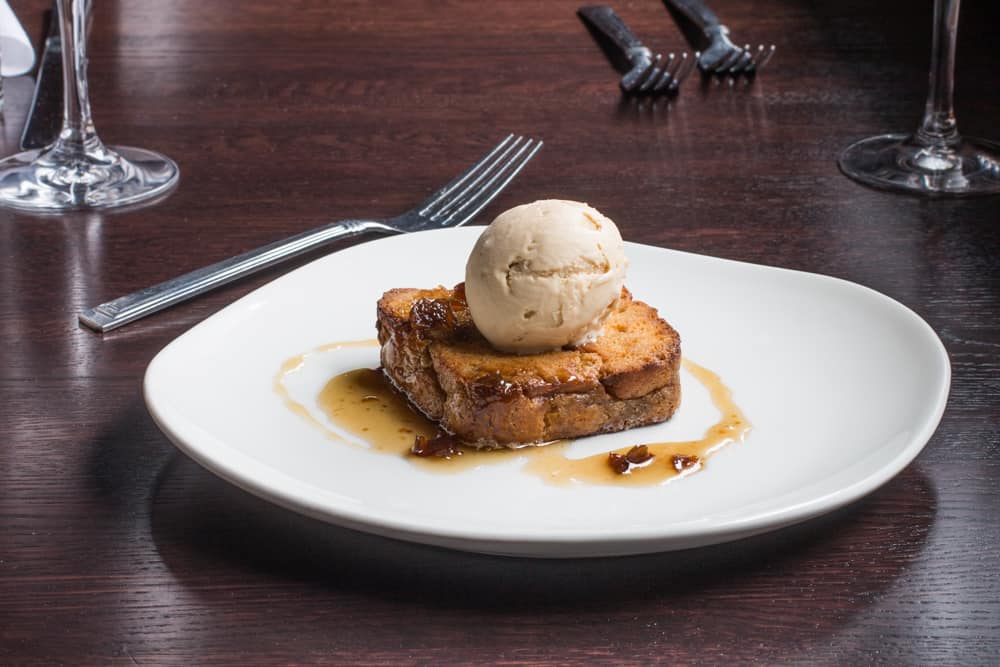

Thomas
Hi chef !
- sorry for the bad english ! -
I'm asking it here, sorry if it's the wrong place ...
I'm currently trying to fix a recipe for a "curry powder" made exclusively of dried mushrooms that i could use the same way as real curry spice for stews and similar dishes. I managed to find the orange dye (cinnabar polypore), curry flavour (european candy cap relatives), and so on ..., but failed to find a mushroom that would keep a hot/spicy/peppery taste after cooking. Any idea ?
I tried peppery boletes, a few spicy russulas and lactarius, but they all lose their peppery taste after a short cook ...
Andy
I like candy caps in savory dishes. They are very tasty dry sauteed. I made a very nice pate with them with ground walnuts. One of my favorites is a blended soup with candy caps, carmelized onions, a little chicken bullion, and some cream.
Mary E Kellington
I was gifted some dried candy caps by my fabulous niece (Thanks Rosalie!)
I ground a tablespoon or 2 and used them to flavor a 3 egg white batch of swiss buttercream. It was the most amazingly wonderful macaron filling. Delicious.
Alan Bergo
I can corroborate that candy cap buttercream is delicious. Macaroons would be wonderful.
SaidWhatWhen
I made candy cap and ginger kombucha, 2 tsp candy cap powder in a gallon of kombucha. Ginger to taste.
Robin L Jeffers
Instead of dried candy caps, I've got fresh blue-green anise mushrooms (Clitocybe odora0> Arora says, "can be used as flavoring in cookies or bread." But I've not found any recipes on the web. And the candy cap recipes I have found use dried ones. I'm hoping your advice to infuse flavor into dairy, cream, etc., will work with these--I'll try panna cotta. I had hoped for cookies though, but have no clue as to what would happen to fresh shrooms in cookie dough.
Alan Bergo
I wouldn't put fresh shrooms in cookie dough. I'm speculating here as I haven't worked with those, but, like chanterelles, some flavors can change when the mushrooms are cooked, so if you want to retain the aroma of them fresh, don't cook them, at least in one batch. I would warm the cream and sugar for your panna cotta with the mushrooms, cool it, add the mushrooms raw and allow them to steep over night. strain out the mushrooms, heat, pour into containers and set. If the mushrooms keep their flavor after cooking, you could bring it to a simmer with them for a stronger flavor. Either way I would probably strain the mushrooms out though.
Sheri Smith
Question, instead of '2 tsp' of Candy caps ( which can vary incredibly to say the least ie: how fine or how coarse the candy caps are ground. SO..... My question: to be more accurate, How many Grams of Candy Caps for this recipe ? TIA
Alan Bergo
Ground mushrooms won't vary in weight that much, but calling for something like "1 cup of any dried mushroom", without any weight comparison would be really foolish. With candy caps, you need only a teeny tiny amount to flavor most things. With the ice cream, 4 grams is going to be about 2 teaspoons, and you might even be able to get away with a little less. More people have kitchen scales than they used to, but weighing such small amounts can be tricky if you don't have a sensitive scale. Hope that helps.
Sheri Smith
Alan ~
Thank you, I'm going to use 3 grams this time & see how it turn out. The only reason I have trouble with using 'tsp' per se , it can vary depending on what the 'ingredient' is. weather it's a very coarse item or a a very fine powdery item one tsp of Whole Rosemary vs. fine ground Rosemary... huge difference . This is why some recipes could be potentially go very wrong for some. Thank you & I appreciate very much for your quick response ! Happy New Year !
Sheri Smith
Candy Cap Ice Cream ! Had it once at Salt & straw ice cream in Portland OR ! My...oh my ! There are no words to describe how delicious it was !
Alan Bergo
CC IC is a great one.
Joanne Burnett
Are these mushrooms related to fairy ring mushrooms?
Alan Bergo
No. These two vary greatly from a culinary standpoint as well as genetic. Fairy rings are from the Genus Marasmius, Candy caps are likely going to be Lactifluus rubidus, or a closely related species. I use fairy rings for savory dishes. Candy caps I generally only use in desserts. 🙂
Carla Beaudet
I've been working on a recipe for candy cap ice cream, but I'm not an ice cream expert by any means. I notice you did not cook your custard to thicken it - does it work just as well for the texture that way? I am thrilled to say I found a L. fragilis this Summer, in the Appalachian mountains where I live. There were undoubtedly many more, but I'm still at the stage of making a positive identification of these. There are a LOT of LBM's, and to confound the issue, L. fragilis doesn't smell incredible until after it is dried - there's really no trace of the aroma in the fresh mushroom. The diminutive size, overall cinnamon-brown color, combined with the presence of scant watery white latex are your main clues until you dry the mushroom. From there, you want to smell every single one you dry to be sure.
Colin Franger
I know this post is getting on in age... I've got a pretty good load of candy caps I picked out here in the Columbia River Gorge last year. I dried them nice and slow and the aroma is on point. If you're interested in having me send some shoot me an email and we can make arrangements. Getting sucked into your blog. So many ingredients I haven't considered before.